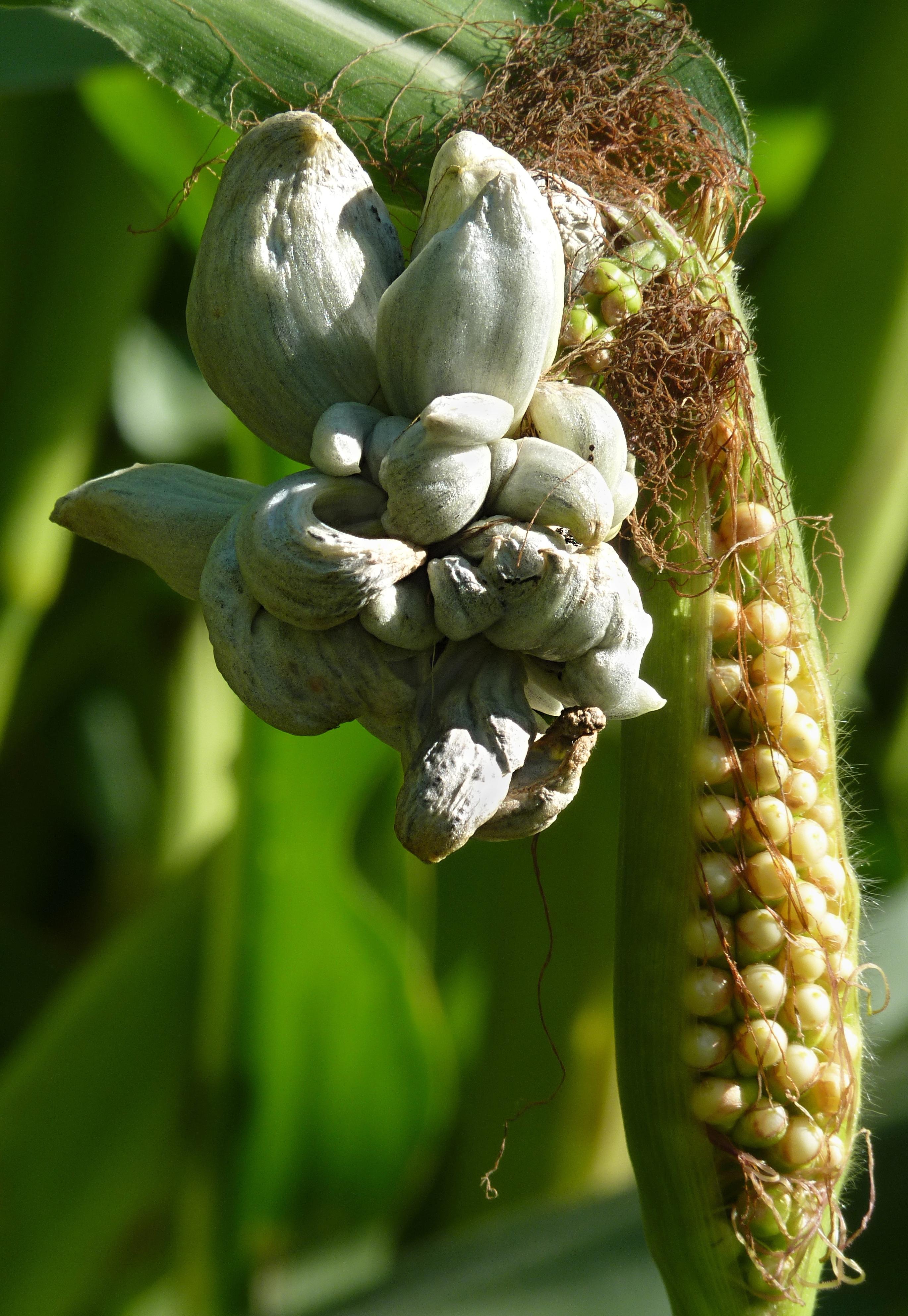
Common smut
Ustilago maydis
What is Common smut (Ustilago maydis)?
Ustilago maydis, commonly known as corn smut, is a fungal pathogen that can infect two different hosts: maize and teosinte. This unique fungus, belonging to the phylum Basidiomycota, holds significance both as an agricultural concern and a culinary delicacy in specific regions. Ustilago maydis causes blackish galls (tumour-like growth) filled with spores on corn plants that vary in size from less than 1 cm to more than 30 cm in diameter, appearing on ears, leaves, stalks, or tassels. Galls start with white to silvery tissue and mature into dark spore-filled masses. However, in central Mexico, the galls on corn ears are cherished as the edible delicacy cuitlacoche (huitlacoche), adding cultural significance to the fungus's practical impact.
How does Common smut (Ustilago maydis) occur?
It overwinters in crop debris or soil and can remain viable for several years. Ustilago maydis, or corn smut, reproduces through a complex life cycle involving sexual and asexual reproduction. The fungus reproduces asexually through sporidia, secondary spores released from the mycelium. Sporidia contribute to the rapid spread of the fungus. while sexual reproduction is through basidiospores, which are released and dispersed by the wind. Basidiospores infect healthy corn plants, initiating the infection process. This reproductive cycle enables Ustilago maydis to disseminate and infect new corn plants.
Symptoms
1 - Impact on Corn Crop
• Ustilago maydis causes galls on corn, reducing yield and quality, and leading to economic losses for farmers. • Infected plants may experience stunted growth, reduced vigor, and overall decreased productivity. • The galls can interfere with nutrient uptake and photosynthesis, negatively impacting the plant's development.
2 - Impact on Soil and Environment
The fungus can overwinter in soil and crop debris, serving as a potential source of infection. • Despite its negative impact on crops, corn smut contributes to ecosystem nutrient recycling and decomposition processes.
Solutions
1 - Cultural Practices
1. Implementing a crop rotation plan can help reduce the risk of infection. Avoid planting corn and teosinte in the same area year after year. 2. Choose crop hybrids that have shown resistance or tolerance to corn smut. 3. Remove and destroy infected plant material, including galls and crop debris, to reduce the presence of inoculum in the field. 4. Maintain proper plant nutrition and irrigation practices to promote plant health and vigor, reducing the susceptibility to infection. 5. Regularly inspect corn and other plants for signs of galls and promptly identify any infected individuals.
2 - Biological Control
Some beneficial microorganisms can help suppress Ustilago maydis such as Bacillus subtilis, Trichoderma spp., Gliocladium spp., Streptomyces spp., and Pseudomonas fluorescens are used to kill fungi.
3 - Chemical Control
1. In severe cases or when economic thresholds are reached, fungicides can be used to control corn smut such as Azoxystrobin, Flutriafol, Propiconazole, Mancozeb, Thiophanate-methyl and Triadimefon. 2. Consult with agricultural experts or extension services to determine the appropriate fungicides and application timing.
